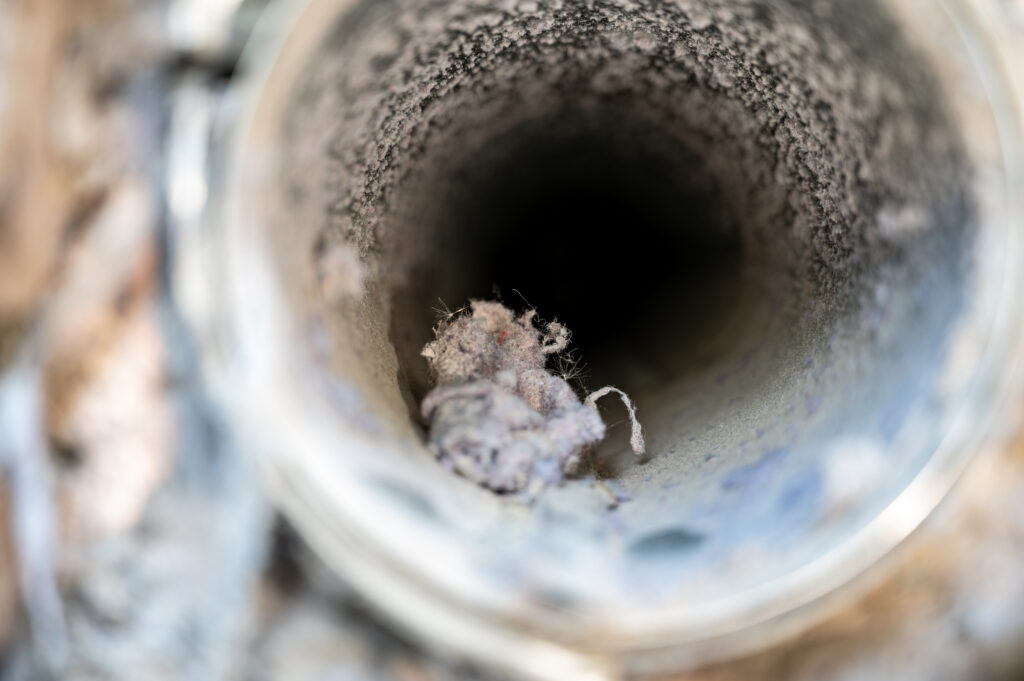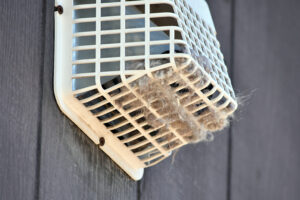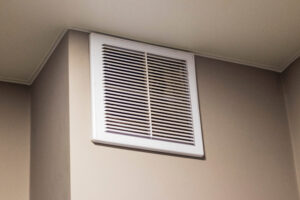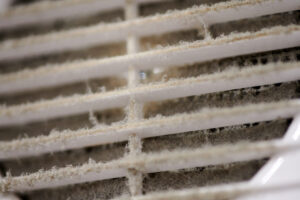Last Tuesday, I found myself staring at a blackened, twisted mess that used to be my neighbor’s laundry room.
Standing beside the fire inspector as he pointed to the charred remains of a dryer vent, I couldn’t help but think about the load of towels tumbling in my own machine at home.
“This is the third one this month,” he sighed, clicking his flashlight off.
“And completely preventable.”
The Silent Threat Hiding in Plain Sight
We’ve become remarkably casual about operating what’s essentially a box of fire in our homes.

Dryer Vent In Need Of A Cleaning
Your dryer generates enough heat to ignite fabric – that’s literally its job. But it’s designed to contain and channel that heat safely… until it can’t.
Most of us dutifully clean our lint trap after each load, creating that oddly satisfying ritual of peeling away the soft fabric blanket. But here’s the uncomfortable truth: your lint trap only catches about 60% of the fibers shed from your clothes. The rest? They’re on a journey through your ductwork, sticking to surfaces still damp from the water evaporating from your clothes, creating a progressively narrowing tunnel that stretches all the way to your home’s exterior.
Given that the average family runs 5-7 loads of laundry weekly, even that remaining 40% adds up frighteningly fast. Over months, that accumulation transforms from nuisance to nightmare. Lint isn’t just flammable – it’s the stuff we once used to start fires before matches were invented.
The Signals Your Home Is Sending
Your house is practically begging you to notice when your vents are clogged, but we’ve become experts at ignoring the warnings. When my client Elaine called about her “broken” two-year-old dryer, I asked how long clothes had been taking to dry. “Oh, that’s been getting worse for months,” she admitted. “I just run everything twice now.”
That right there – the extended drying time – is your first and most obvious red flag. Your machine is screaming that it can’t breathe.
Pay attention to how warm your laundry room gets during operation. A properly venting dryer sends that heat outside. If your walls feel hot or the room becomes noticeably humid, that heat and moisture are staying indoors – along with the fire risk they carry.
The most concerning warning? When your clothes emerge from a completed cycle feeling unusually hot. This indicates your machine is overheating as it struggles against airflow resistance, creating precisely the conditions that precede dryer fires.
The DIY Trap: When Good Intentions Increase Danger
After my neighbor’s fire, several people on our block purchased those long, flexible brushes from the hardware store. I watched one homeowner vigorously shove hers into her vent, proudly displaying the lint she removed. What she couldn’t see was how much she’d actually compressed further down the line.
Why Your Brush Kit Falls Short
Those DIY kits create an illusion of safety that might be worse than doing nothing. The typical homeowner brush reaches 4-6 feet – adequate for apartments or condos with exterior walls immediately behind machines. But in most homes, dryer vents navigate complex paths through walls, ceilings, or crawlspaces, stretching 15-20 feet before reaching outside.
I’ve opened ductwork where DIY cleaning attempts had actually created denser, more dangerous lint plugs deep in the system. These compressed masses are precisely where fires typically ignite, hiding beyond the reach of consumer tools.
Professional Equipment Makes the Difference
When I clean a vent professionally, I’m mapping your entire system from both ends. My commercial-grade equipment includes cameras that inspect every inch of ductwork, rotary brushes that scour interior surfaces through multiple bends, and vacuum systems powerful enough to capture dislodged lint rather than redistributing it.
Most importantly, I can verify completion with before-and-after airflow measurements. That quantifiable difference is your assurance that the entire pathway is clear, not just the accessible portions.
Beyond Safety: The Compelling Economics
Fire prevention alone justifies professional cleaning, but the efficiency improvements make it a genuine bargain. A partially clogged vent forces your dryer to run longer and hotter, consuming up to 30% more electricity. For the average household, that’s an additional $15-25 monthly – easily exceeding the cost of annual professional cleaning.
The strain of operating against resistance also shortens your appliance’s lifespan. Modern dryers should last 10-13 years, but ventilation issues can cut that in half. When you’re replacing a $700 machine years earlier than necessary, that $150 cleaning looks remarkably economical.
The most valuable thing you’re protecting, though, isn’t your home or appliance – it’s the people inside. Ask anyone who’s survived a house fire how quickly it happened, how little warning they had. Then ask yourself if proper vent maintenance might be worth prioritizing after all.




